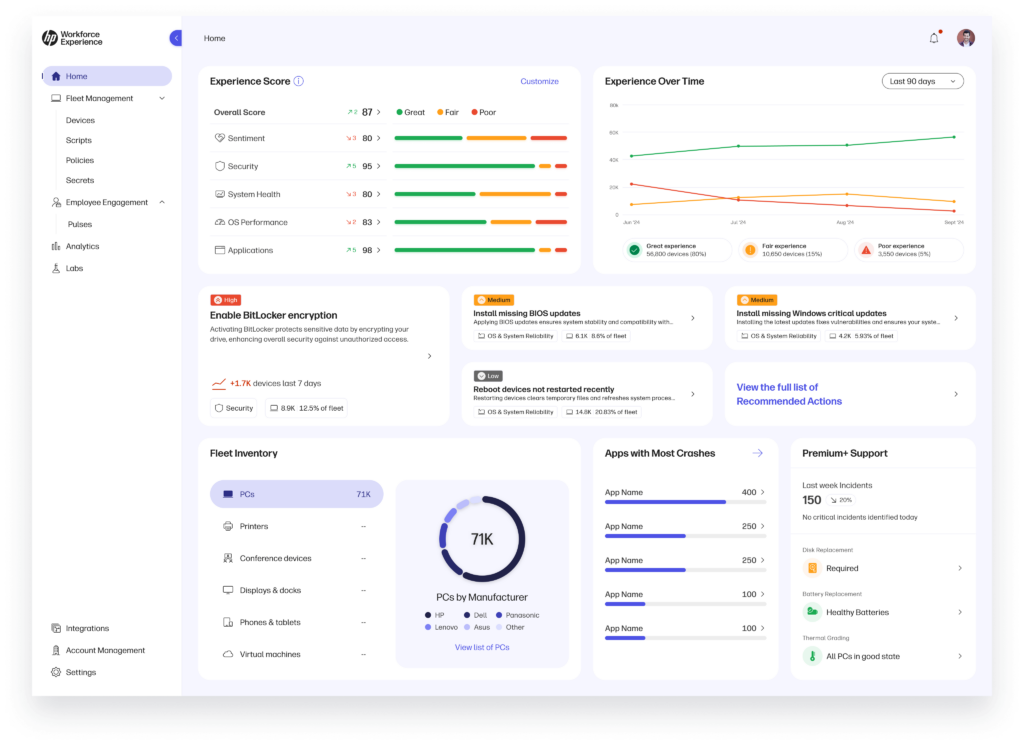HAM Software Must-Haves
IT experts share why unified portals, real-time telemetry, and mainstream tools are redefining hardware asset management success.
Effective hardware asset management (HAM) has become critical as organizations seek to simplify IT operations, improve visibility, and control costs. With hybrid workforces and rising complexity in device ecosystems, choosing the right hardware asset management software can directly impact productivity, compliance, and security posture. The insights below from IT leaders provide strategic guidance for evaluating tools across the hardware asset management lifecycle.
A single portal to manage all devices
The push toward centralized IT operations is gaining momentum, with leaders recognizing the operational burden of managing devices across disparate systems. The need for efficiency, simplified reporting, and security visibility is driving decision makers to prioritize software that offers an integrated dashboard. A recent poll in the CIO Tech Talk community asked if organizations plan to consolidate vendors in the next 12 months and an overwhelming 95% of respondents confirmed they are, signaling a strong shift toward vendor consolidation.
"A consistent theme we've heard from customers and partners is, give me a single portal. Give me one place to go to manage PCs, printers, and collaboration tools. Make it easy to see security and telemetry in a single place. And make sure it's easy to report on how these devices are being used."
Larry Meadows
Sr. Product Manager, Thought Leader & Platform Evangelist @ HP Workforce Experience PlatformSource: LinkedIn
This insight reinforces the value of IT hardware asset management software that consolidates multiple hardware ecosystems into a single pane of glass. Streamlining reporting and monitoring helps IT reduce fragmentation and respond faster to issues, making it easier to manage the entire hardware asset management lifecycle from deployment to decommissioning.
Real-time visibility and control
Modern IT environments demand real-time data to keep systems resilient and user experiences optimized. Reactive methods no longer suffice as endpoints grow more complex and distributed. As PubNub highlights, implementing real-time telemetry enables quicker access to pertinent data, which accelerates troubleshooting and reduces Mean Time to Resolution (MTTR)—a vital metric for IT teams.
"Telemetry matters. WXP provides real time telemetry on application crashes, blue screens, and other performance issues to help IT identify those pockets of suffering."
Nathan Kofahl
Director of Software Product Management for Endpoint Management Tools and Services @ HPSource: LinkedIn
Investing in hardware asset management software with real-time capabilities gives IT visibility into hardware health and user experience in the moment rather than after an issue occurs. This allows for proactive interventions and minimizes business disruption, especially for remote and hybrid teams relying on stable infrastructure.
Wide adoption and endorsement
While niche solutions offer depth, broad adoption of mainstream tools often delivers better support, faster onboarding, and greater long-term value. The IT Asset Management Software market was valued at USD 7.12 billion in 2024 and is projected to reach USD 13.08 billion by 2032, reflecting rapid adoption as organizations seek scalable, reliable platforms.
"What I recommend as part of our pragmatic ITAM method is stick with the easy ones. Intune for your Windows devices. Jamf for Apple. There are others that will also do the work, but those two are the big ones, and they will get the job done."
Jeremy Boerger
Founder @ Boerger Consulting, previously Enterprise Software Asset Management Associate @ JPMorgan ChaseSource: Securis
Following expert recommendations and leveraging established tools as part of an IT hardware asset management software strategy can reduce risk and speed up time to value. Adoption of industry-standard platforms also simplifies integration with other systems across the IT estate, closing the loop on the hardware asset management lifecycle.
In conclusion, consolidated platforms, real-time telemetry, and widely supported tools are the pillars of effective hardware asset management today. IT leaders are prioritizing unified visibility, faster diagnostics, and compatibility with trusted vendors. When selecting hardware asset management software, focus on solutions that simplify complexity and scale with evolving needs. Organizations that invest in the right tools will not only reduce risk and improve user experience but also gain a lasting operational advantage.









